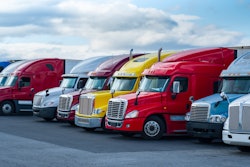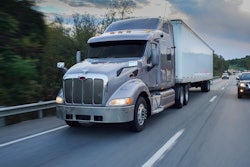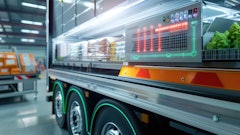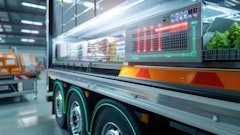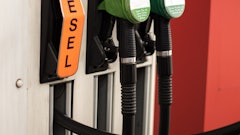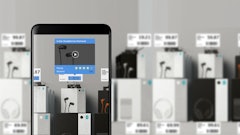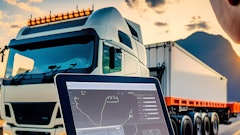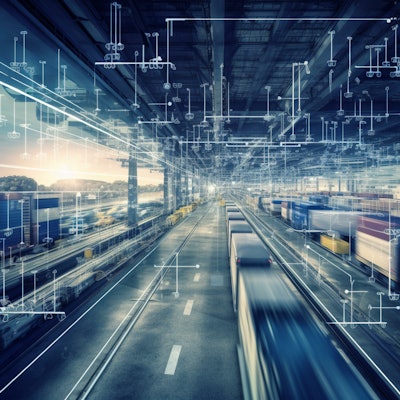
Last mile is a critical frontier. Often considered the most complex and costly leg of the supply chain, the rise of e-commerce and increasing customer expectations for fast and reliable deliveries has highlighted this complex part of the journey.
A recent report by Extensiv found that while a majority of third-party logistics (3PL) providers still show positive order and profitability growth, a larger group of 3PLs are now seeing flat or declining profits as the economy fluctuates. The report includes that, although approximately one-third of 3PL respondents showed more than a 25% increase in order volume growth year over year and 42% indicated an increase of up to 24%, 22% of respondents either remained the same or saw a decline.
Years of innovation to revolutionize the last mile has answered the call to improve these costs and drive efficiency, culminating in the latest advances in AI that synthesize analytics and tracking to transform the future of 3PL operations.
Route Optimization and Demand Forecasting at Large
Planning is a critical component to the last mile, which often requires route optimization to make the most out of the trip. This is where artificial intelligence (AI) excels. Through predictive analytics and machine learning algorithms, AI can analyze historical data, including traffic patterns and weather conditions to dynamically adjust delivery routes. This not only ensures the fastest and most efficient paths but also allows for real-time adaptations to unexpected disruptions such as traffic jams or road closures. By mitigating the risks associated with unpredictable variables, AI-driven route optimization minimizes delays and enhances the reliability of deliveries.
Armon Shahpar, senior lead, enterprise partnerships, Uber Freight, says that modern supply chains tap into intelligent, data-driven tools to optimize the way goods, like food and beverages, are delivered.
"Today’s supply chains are more complex than ever, and so it’s critical that the tools to power them are data-informed and offer real-time insight into the market. Shippers in the cold food chain need to be nimble, so technologies that can offer instant access to a variety of capacity options and real-time tracking/pricing/billing have become table stakes," explains Shahpar.
 AI database reports metrics.everythingpossible.stock.adobe.com
AI database reports metrics.everythingpossible.stock.adobe.com
This is becoming exponentially more important moving into 2024. E-commerce sales are predicted to increase by 7% this holiday season to $273.7 billion, according to the National Retail Federation and CBRE calculates a maximum value for this season’s returns of online purchases at $82.1 billion. By aligning supply with demand, AI-driven demand forecasting enhances overall supply chain resilience and ensures that the last mile is well-prepared to meet fluctuating customer demands.
Analytics, Monitoring and Tracking
Through advanced sensors and location services, AI enables logistics providers to monitor the exact location and status of deliveries in real time. Many cloud-based solution use IoT sensors to provide real-time cargo monitoring from distribution centers to final destinations. This monitoring can offer temperature alerts in food logistics that safeguard the integrity of cargo, and this level of visibility is invaluable for addressing delays and providing customers with accurate information— keeping everyone happy and leading to quality product legacy and a solid perception of service providers.
AI tools now excel in predictive analytics for the last mile. The analysis of data collection through monitoring systems and tracking aids allows AI to offer predictions of potential delays and bottlenecks. It's proactivity before reactivity, improving costs upfront and possibly providing risk mitigation in the process.
Tire tracking, for example, can automatically begin to generate preventive maintenance inspections and tasks, improving fleet management. Fred Kraus, VP of product at Eptura, says that to ensure that fleets are operating safely and effectively, organizations can monitor and analyze the performance of their tires to gain visibility into usage, age and repair history. In doing so, fleets can protect drivers, equipment and goods for which they are responsible.
A Helping Hand for Same-Day Options
It's the little things AI, predictive analytics and 'smart' services can do for the accuracy of the last mile. Today, same-day delivery options are almost commonplace as consumers wants and needs have turned to timely actions to combat their busy lives.
 A delivery truck drives through the streets to end point.reith/stock.adobe.com
A delivery truck drives through the streets to end point.reith/stock.adobe.com
"Delivery drivers spend extra time and fuel on fruitless journeys caused by inaccurate addresses. In addition, every returned package due to a bad address adds more sunk costs to a business's operation. These unnecessary expenses can pile up and eat into profit margins, impacting the overall financial health of a delivery business. On the flip side, address validation optimizes delivery routes, improves delivery speed, saves fuel costs and minimizes returns for delivery companies," says Charlton.
Ultimately, the ability to anticipate and address issues before they impact last mile operations is one of the top advantages that AI brings to the table.
AI is also behind the insurgence of autonomous vehicles (AVs). Tyson Foods recently started utilizing driverless options to haul meats and it's possible that the last mile will see more of these options in the near future. Why?
"Enhanced efficiency is one of the key benefits AI promises to the business world. By automating tasks previously delegated to human workers, AI empowers a new generation of always-on business processes. The work AI does — from coding to customer service to driving AVs — can happen 24/7, without a break," says Anar Mammadov, co-founder and CEO of Senpex. "AVs also promise to increase efficiency and speed through platooning. Because AVs use AI-empowered navigation, they are capable of safely following other AVs very closely in platoon formations. This allows for increased throughput, which enhances the speed and efficiency of the overall delivery process."
It's clear that AI is bringing more optimization to the last mile. The most prevalent options are the use of route optimization and demand forecasting which has, since conception, been a vital tool for 3PLs in general and might be the easiest to integrate from a system already in place.
But growth is happening despite disruption and economic lows, and now more than ever, the opportunities afforded to the sector from AI range from detailed reporting and tracking to full scale autonomous fleets. The choice for AI in the last mile is not will I use it— the answer is you likely already are. The real question lies in which avenues you will go to build upon the efficiency that AI can offer.







